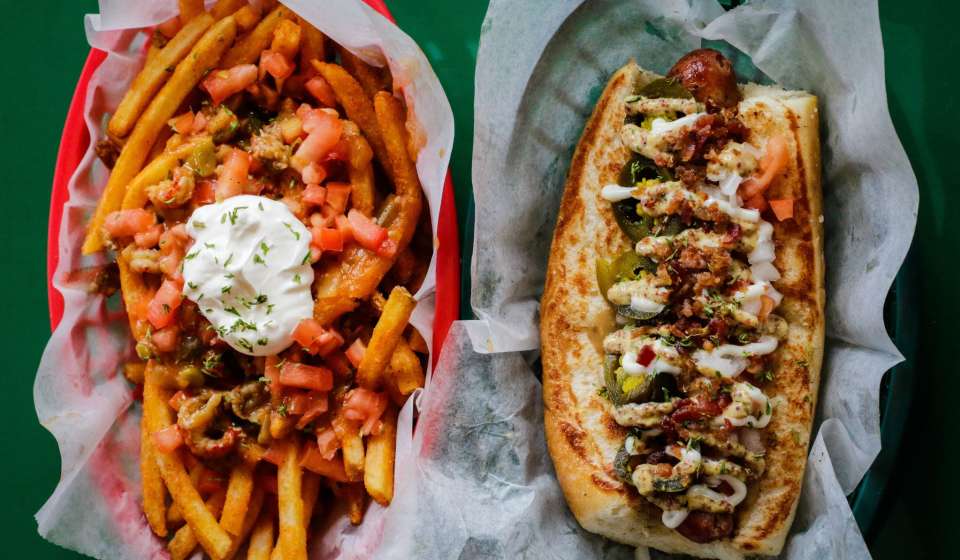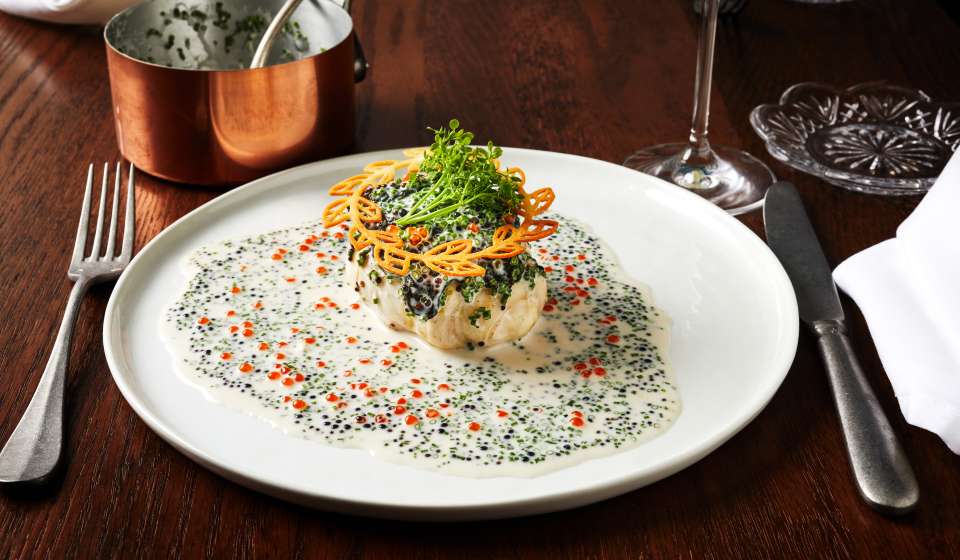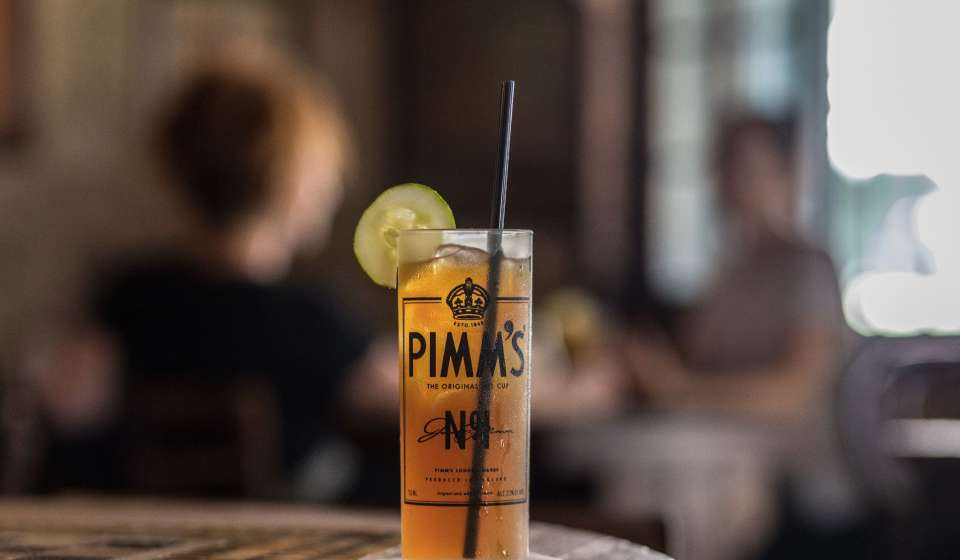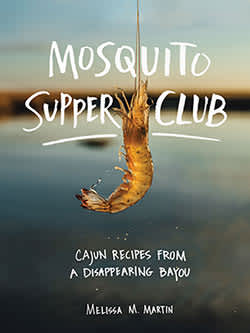Welcome to GoNOLA Cookbook Club - a virtual cooking series for anyone who loves New Orleans cuisine. Since we can’t dine in some of our favorite restaurants right now, we might as well still find ways to enjoy New Orleans meals together, albeit apart.
For each round, we’ll pick the cookbook and provide the recipe, giving you time to gather ingredients. Then we’ll pick a night to make the dish live with the author over on our Instagram, so that they can introduce you to some tips and tricks, as well as answer any questions you may have along the way.
Once you’ve made the dish, be sure to share your creations with us by tagging us (@GoNOLA504) and using the hashtag #GoNOLACookbookClub. And if you like what you’ve made, be sure to grab a copy of the full cookbook.
For our first ever installment of GoNOLA Cookbook Club, we’ve selected perhaps one of the most classic Cajun warm weather meals there is–a seafood boil. And there’s no better person to walk us through it than Melissa Martin, the owner and chef of Mosquito Supper Club, a Cajun dining experience in the heart of Uptown New Orleans.
Meals at Mosquito Supper Club feel more like an intimate dinner party than a traditional restaurant–courses are served family-style, and diners sit at communal tables, turning strangers into friends as Martin weaves stories of her upbringing in Chauvin, La. into each dish that comes out of the kitchen.
Central to Martin’s cooking is her passion for sustainability, support of local fishermen and farmers, and having a true connection to the food that you bring into your kitchen. Her debut cookbook, also titled Mosquito Supper Club, is a visually stunning love letter to Southern Louisiana, and the culinary and ecological landscape that shaped her experience as a chef.
When it comes to boiling seafood, it may seem that a giant outdoor setup with propane burners and a Cajun pedigree might be requirements, but in truth, it’s an easy meal to scale down and recreate in the comfort of your home kitchen. All you need is your standard large stockpot, some fresh (or frozen) shrimp and a few other kitchen staples.
And while Martin’s original recipe serves six people, the recipe is easily scalable–Martin recommends about a pound of shrimp per person.
Mosquito Supper Club is available for purchase online or through your favorite local bookshop.
Boiled Shrimp
Excerpted from Mosquito Supper Club by Melissa Martin (Artisan Books). Copyright © 2020.
The secret to boiling any seafood is a flavorful stock. Your stock should taste good before you add the shrimp. My mom claims that adding butter to the stock makes the cooked shrimp easier to peel—and I would venture to say it adds some flavor, too.
When you serve them with crackers, seafood dip, corn, and potatoes, it takes just a couple dozen shrimp to fill you up. If it’s summer, serve some watermelon topped with a sprinkle of sea salt for dessert. Any shrimp you have left over can be used in another meal—maybe a shrimp omelet for breakfast or shrimp dip for a snack. You can also peel and freeze shrimp, then use them as a binder in crab cakes. Try not to waste a single shrimp.
Serves 6
- 1½ bunches celery (about 11 stalks), cut into 4-inch (10 cm) pieces
- 6 pounds (2.7 kg) yellow onions, quartered
- 12 lemons (3 pounds/1.35 kg), halved
- 1 tablespoon cayenne pepper, plus more as needed
- 1 tablespoon whole black peppercorns
- 5 pounds (2.3 kg) medium head-on shrimp
- ½ pound (2 sticks/225 g) unsalted butter
- 1 to 1½ cups (240 to 360 g) kosher salt
- 12 ounces (340 g) small red potatoes (about 6), scrubbed
- 6 ears corn, husked
- Crackers, for serving
- Maria’s Seafood Dip (page 306), for serving
Fill a heavy-bottomed 4-gallon (15 L) stockpot halfway with water. Add the celery, onions, lemons, cayenne, and peppercorns to the pot. Bring the water to a boil over high heat, then reduce the heat to low and simmer until the vegetables are soft, about 1 hour. Taste the stock; it should have a subtle bright vegetable flavor and taste clean, with hints of onion and celery. If it’s nicely flavorful, you’re ready to boil the shrimp; if not, simmer for 30 to 45 minutes more, then taste again.
When the stock is ready, raise the heat to high and return it to a boil.
Rinse the shrimp briefly under cold running water and drain (don’t overwash them—you don’t want to rinse away all their flavor). Add the shrimp to the boiling stock and use a spoon to submerge them so they can release all their flavor. Let the liquid return to a boil, then boil the shrimp for 4 minutes.
Add the butter to the pot, stir and cook for 2 minutes more, then pluck a shrimp out of the stock and check for doneness. The shrimp should be bright pink and firm; if needed, cook for up to 2 minutes more, then turn off the heat. (They can get mushy quickly, so don’t overcook them—from the time the stock returns to a boil after you add the shrimp, the total cook time should be no more than 8 minutes.)
Stir ½ cup (120 g) of the salt into the stock and let the shrimp soak for about 6 minutes. Taste the shrimp for flavor: your shrimp are done when they taste buttery and sweet, with hints of cayenne and the perfect amount of salt. At this point, you may need to add more cayenne or salt. Add cayenne to taste. Add another ¼ cup (60 g) of the salt and let the shrimp soak for 2 to 3 minutes more; repeat as needed. The amount of salt you use is relative: some folks want only a little, and some want a bit more. Finding the perfect balance is a matter of taste, but if your shrimp taste bland, they probably need a little more salt and a longer soaking time.
When you’re happy with their flavor, use a strainer to transfer the shrimp to a large bowl, or set a colander over a large bowl and drain the shrimp in the colander, then transfer them to a large bowl (reserve the stock).
Return the stock to the stove and bring it back to a boil. Add the potatoes and boil for 6 minutes, then add the corn to the pot and boil the vegetables together for 4 minutes more, until the potatoes are tender. Strain the potatoes and corn and discard the stock. Transfer the potatoes and corn to a bowl.
Thoroughly prepare to feast: Cover a table with newspaper. Have your crackers out and ready to eat and small bowls of seafood dip for each person. Have plenty of paper towels or napkins ready to go. (Once you get your hands dirty peeling, you won’t want to be grabbing supplies.) Pour the shrimp, corn, and potatoes right out onto the center of the table and enjoy.
Maria’s Seafood Dip
Makes 3 cups (720 ml)
- 2 cups (480 ml) mayonnaise
- 1 cup (240 ml) ketchup
- ½ yellow onion, finely diced
- 1 teaspoon yellow mustard
- 1 teaspoon hot sauce, preferably Original Louisiana Hot Sauce
- ⅛ teaspoon kosher salt
- Pinch of freshly ground black pepper
The dip to eat with boiled shrimp, crawfish, and crab is a simple combination of mayonnaise, ketchup, and seasonings. It seems like many different cuisines have a Thousand Island dressing–like combination such as this.
Mix all the ingredients in a bowl until well combined. This dip will keep in an airtight container in the refrigerator for up to 3 months.













